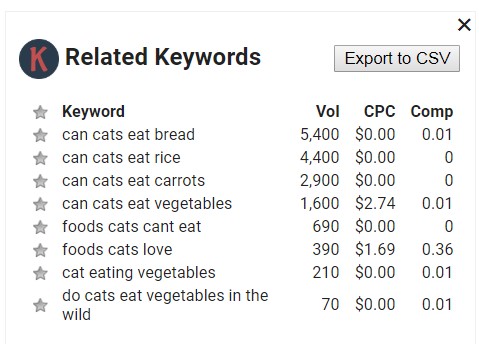For years now, there has been a lot of buzz about keyword optimization and research. While the premise behind each often is considered common knowledge, the reality is that many marketers are not especially comfortable with what these terms actually mean, why they are important, or how they can have an impact on their brands.
Keyword Research and Optimization
In a nutshell, keyword optimization refers to the process of researching and analyzing terms relevant to your brand and then strategically including those throughout your website content (optimization). Though the term “keyword research” is sometimes used interchangeably with “keyword optimization,” in reality it simply refers to the first stage of the optimization process. At the most basic level, the optimization process is important because the more easily a search engine can associate your website (including your blog!) with a specific search term, the higher your site will appear in the search engine results pages (SERP).
Is Keyword Optimization Even Still Relevant?
Because Google searches—and thus, best practices for keyword optimization—are ever-evolving, there has been some discussion about whether or not marketers should still prioritize keyword research. And there is some merit to that question: while keywords are still important, search technology (especially with the inclusion of voice search!) has evolved to the point that consumers type longer, more conversational queries into search engines rather than simply including keywords. We advocate taking a blended approach: it’s best to still research and optimize for certain keywords, but make your searches more specific than the broad term “social media marketing,” for instance.
How to Optimize Your Website Content
Determine Top-Priority Keywords
Before you rush to establish a strategy to improve your search engine ranking for specific keywords, it’s important to determine what terms you would like to prioritize—and whether they present realistic goals for your brand. For fresh produce marketers, it’s reasonable to aim for first-page results with, say, a relevant niche query like “fresh produce marketing”…but you’d be hard-pressed to rank for more general phrases like “social media marketing” for which there is a great deal more competition for dominance.
Study Other Websites That Already Rank Highly for Your Priority Keywords
While we’re all about innovative marketing and working to stand out from the crowd, we also believe that there is always something to be learned from other marketers who are doing good work—even it happens to be your competition. Thus, we find it valuable to cultivate a good understanding of what websites already rank highly for keywords your business would like to dominate, and then draw some conclusions about why. Typically, high-ranking websites will have the following characteristics:
- Clean, well-organized site layout (Note: this doesn’t necessarily have to mean lots of flashy images and all the bells and whistles! A digestible, easy-to-read website is more helpful to visitors than a gorgeous but “busy” page. We suggest aiming for the best of both worlds, so to speak.)
- Helpful, relevant, and properly sourced content—especially when other websites cite and link back to your pages
- Established pillar pages and strong internal linking structure—this doesn’t happen overnight, which is part of why sites that perform best on SERPs typically have been around for quite a while.
Perform Initial—and then Regular—Keyword Research
Two tools we recommend for gaining insight into the popularity of your desired search terms—and determining how many viewers found your website using specific queries—are Keywords Everywhere and Google Search Console.
Keywords Everywhere is a Google Chrome plug-in that gives you real-time data on any term you plug in to Google (and other websites), but the real gem is that the tool also provides information on similar terms it finds to be relevant to your search. Here’s an example, using the search query “fresh produce and cats”:

The suggested terms may not always be relevant, but when they are, you receive valuable information on search volume, estimated cost per click, and even a ranking on current competition for that keyword. You also can save your top-priority terms and monitor any changes over time, which allows you to detect trends that can help you make more strategic marketing decisions for your brand.
Google Search Console, another free tool, gives you an in-depth look at your website’s performance in search engines, including whether or not your site is currently being found via searches on relevant keywords, where you stand in SERPs, and which of your pages are being found for pertinent terms. As you pull this information, you can then begin tailoring your marketing content to either include or exclude certain phrases—and downstream, this is when your brand should really begin to see improvements in website metrics, including decreased bounce rate and an increase on the time spent reading your page content.
Like with all other advice we provide about writing and optimizing web content, the most important point to remember is that marketers’ goal should always be to serve our audiences by being helpful first. Garnering web traffic for the sake of achieving more impressions isn’t helping your viewers OR your brand if you aren’t providing the information your readers are looking for (which is what causes sky-high bounce rates, just for the record!). At the end of the day, know that if you are providing useful, engaging information on a consistent basis, you have already won 75% of the battle for those much sought-after spots on Page 1 of the SERPs.
Want to learn more about where some of that other 25% comes from? That’s all about strategy, including other methods of search engine optimization (SEO).
For more fresh produce marketing inspiration and insight from the DMA Solutions team, follow us on Twitter at @TheCoreBlog.
{{cta(‘6719b5df-74ed-4dd8-be16-b1b41b9e6ffc’)}}

